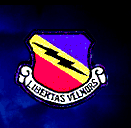 | |
 |
 | ||||||
[ Page 1 ] [ Page 2 ] [ Page 3 ] [ Page 4 ]
AIM 9-L/M "SIDEWINDER"
The AIM 9-L/M Sidewinder missile is an infrared radiation (IR) guided, all-aspect, air-to-air missile. The missile was designed to bridge the gap between the short range of the gun and the long range of the radar missiles. The AIM 9-L/M is 9 feet 5 inches in length and weighs approximately 110 lbs. The AIM 9-M is 2 inches longer and weighs slightly more. Each missile has a diameter of 5 inches and a wingspan of 22 inches. The AIM 9-L/M consists of four external sections: the guidance and control unit, the warhead section, the fusing section and the rocket motor section. Guidance and Control Unit: This is located in front of the missile and houses the seeker head, the argon gas bottle, the guidance control unit (GCU), and the steering canards. The seeker head receives IR energy from a heat source and converts this energy into an electrical signal that is used to navigate the missile. The seeker head is cooled with argon gas to improve its sensitivity. The electronic signal is used by the GCU to keep the seeker head looking at the target and to steer the missile with the front canards. Warhead Section: This section consists of metal casing and a cellulose liner. The casing itself delivers the fragments while the liner controls casing break-up to provide a uniform size. The missile kills with frag, not by contact. Fusing Section: The AIM 9-L/M houses 8 optical target detection windows aft of the canards to affect missile fusing. Fuse arming is delayed after missile launch to provide safe separation from the delivering aircraft. Once armed, the fuse will function on either contact or a proximity miss with the target. The target must be within a certain radius of the fuse before the fuse will function. Rocket Motor Section: The AIM 9-L/M uses the all-boost MK-36 rocket motor housed in the aft part of the missile. This motor provides initial boost during launch to accelerate the missile to speed. After the boost stops - a short time after launch - the missile then glides to its intended target. In flight, the missile is kept stabilized by 4 rollerons located on the aft outer tips of the missile fins. These rollerons are deployed during launch and gyroscopically stabilizes missile roll. These rollerons reduce missile roll to less than one complete roll per 6 seconds. AGM-65D MAVERICK
The AGM-65D Maverick is an infrared (IR) missile which guides autonomously, providing standoff launch and leave capability. The system is designed to enable multiple launches per pass in a target-rich environment. The AGM-65D is 8 feet 2 inches in length and has a diameter of 12 inches. The missile wingspan is 29 inches and it weighs approximately 500 lbs. The AGM-65D is separated into forward and aft sections. The forward section is a hermetically sealed guidance unit consisting of an IR dome, IR seeker, electrical contact trigger, autopilot, and electronics assemblies - including a digital computer. The missile seeker is located immediately behind the guidance unit window. The seeker is gyro-stabilized and free to move left and right 42 degrees, up 30 degrees, and down 54 degrees from the longitudinal axis of the missile. The Maverick seeker also incorporates a duel field-of-view lens that rotates to provide selectable magnification of the target. The wide field-of-view function provides increased target-area orientation, while narrow field-of-view provides maximum launch ranges and improved target identification. The AGM-65D guidance unit IR detector converts IR energy into electrical signals. The internal computer converts these signals into a TV-like picture, enabling a pilot to identify and lock onto objects within the seeker field-of-view. The electronics assembly, which operates the seeker unit, also tracks the target and generates missile steering commands. The autopilot combines these steering commands with gyro-sensed yaw, roll, pitch, and lateral acceleration rates. From this information, the autopilot computes course corrections to steer the missile on a collision path to the target. The aft section is located behind the missile guidance unit and contains a 125 lb. shaped-charge warhead designed to penetrate 26 inches of armor, 32 inches of steel, or 10 feet of concrete. Housed in the aft core of the warhead is a safe, arming, and fuse (SAF) unit. As the missile encounters a designed acceleration/time envelope during launch, the SAF arms the warhead. Warhead detonation is initiated by a contact trigger in the nose of the missile or by a mechanical backup detonator in the SAF, which functions when the missile encounters a lateral deceleration of at least 75 Gs. The missile is propelled by a 104-lb. solid propellant rocket motor. The boost-sustain type motor consists of a case, liner, and blast tube. When launched, the boost phase produces 10,000 lbs. of thrust for the first 0.5 seconds, then 2,000 lbs. of thrust for the next 3.5 seconds. After rocket motor burnout, the remainder of the missile flight is unpowered. Typical targets include small hard targets such as armored vehicles, radar vans, bunkers, small buildings, and boats. 20 MM
The F-16 carries 510 rounds of 20mm munitions. Each round is 6.62 inches in length and has a diameter of 0.79 inches. The weight of a complete round is 0.56 lbs., while the projectile itself weighs 0.22 lbs. A typical 20mm round consists of four basic parts: a brass cartridge case, an electronic primer, propellant powder, and the projectile. When fired, an electrical pulse is applied to the primer, which is located on the bottom of the round. This action produces a flame that travels through gas vents leading to the propellant chamber. The flame ignites the propellant. As the propellant burns, it forms a gas that forces the projectile through the barrel. At the rear of the projectile is a soft metal band that seats in the grooves on the inside of the gun barrel. These grooves are twisted, so as the round leaves the barrel it follows the grooves and rotates the projectile for more stability during flight. The soft metal band also keeps the gas from escaping past the projectile.
An F-16 gun being loaded
There are five different types of 20 mm that can be loaded on the F-16: M55TP (ball), M220TP-T (tracer), M53API (armor piercing incendiary), M56HEI (high explosive incendiary), and XM242HEI-T (tracer). M220TP-T (tracer): The same target practice round with tracer effects added. To get a tracer, two igniters and a tracer element have been added to the base of the projectile. These elements are sealed to prevent ignition of the tracer while the round is still in the barrel. The seal is dissolved when the projectile is traveling
through the barrel. The dim igniter lights first as the round leaves the barrel and burns for about 15 yards. The second igniter lights and then burns for an additional 60 yards. The tracer element is then ignited and burns for a minimum of 1,550 yards. M53API (armor piercing incendiary): This projectile is composed of solid steel. The nose is made of an aluminum alloy and charged with an incendiary composition. A fuse is not required because it
functions on impact. M56HEI (high explosive incendiary): This round requires a fuse to function. The fuse has a built-in arming delay that will not allow the fuse to arm until 20 to 35 feet in front of the gun muzzle. As the projectile spins, centrifugal force is built up, which aligns the detonator with the firing pin and the booster. Upon impact, the nose of the projectile is crushed, forcing the firing pin against the detonator. The booster, which
is initiated by the detonator, causes the projectile to explode. XM242HEI (tracer): The same round as the M56HEI with tracer effects added.
Read more about the use of the weapons systems featured here in the Weapons Bunker during the Gulf War in Keith Rosenkranz´s new book Vipers In The Storm: Diary of a Gulf War Fighter Pilot. The book has received great critical acclaim and is available for purchase online at 30% off the retail price.
| ||||||
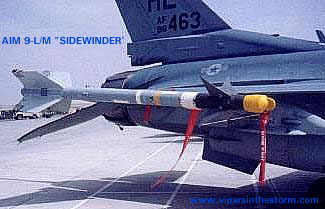
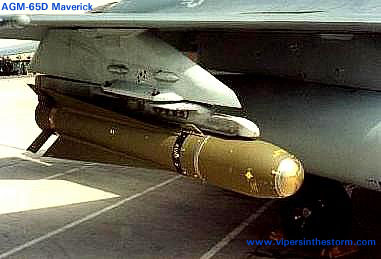
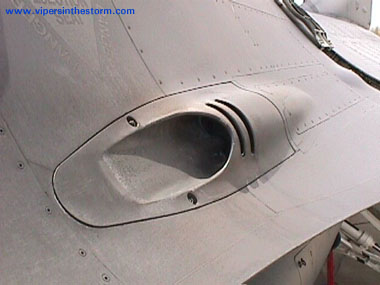
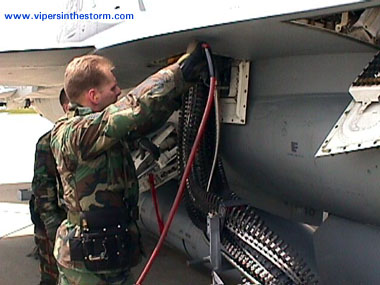
 M55TP (ball): This projectile is used during day-to-day training missions. It is a target practice round that is
made of steel. The projectile is hollow and does not contain any filler.
M55TP (ball): This projectile is used during day-to-day training missions. It is a target practice round that is
made of steel. The projectile is hollow and does not contain any filler.